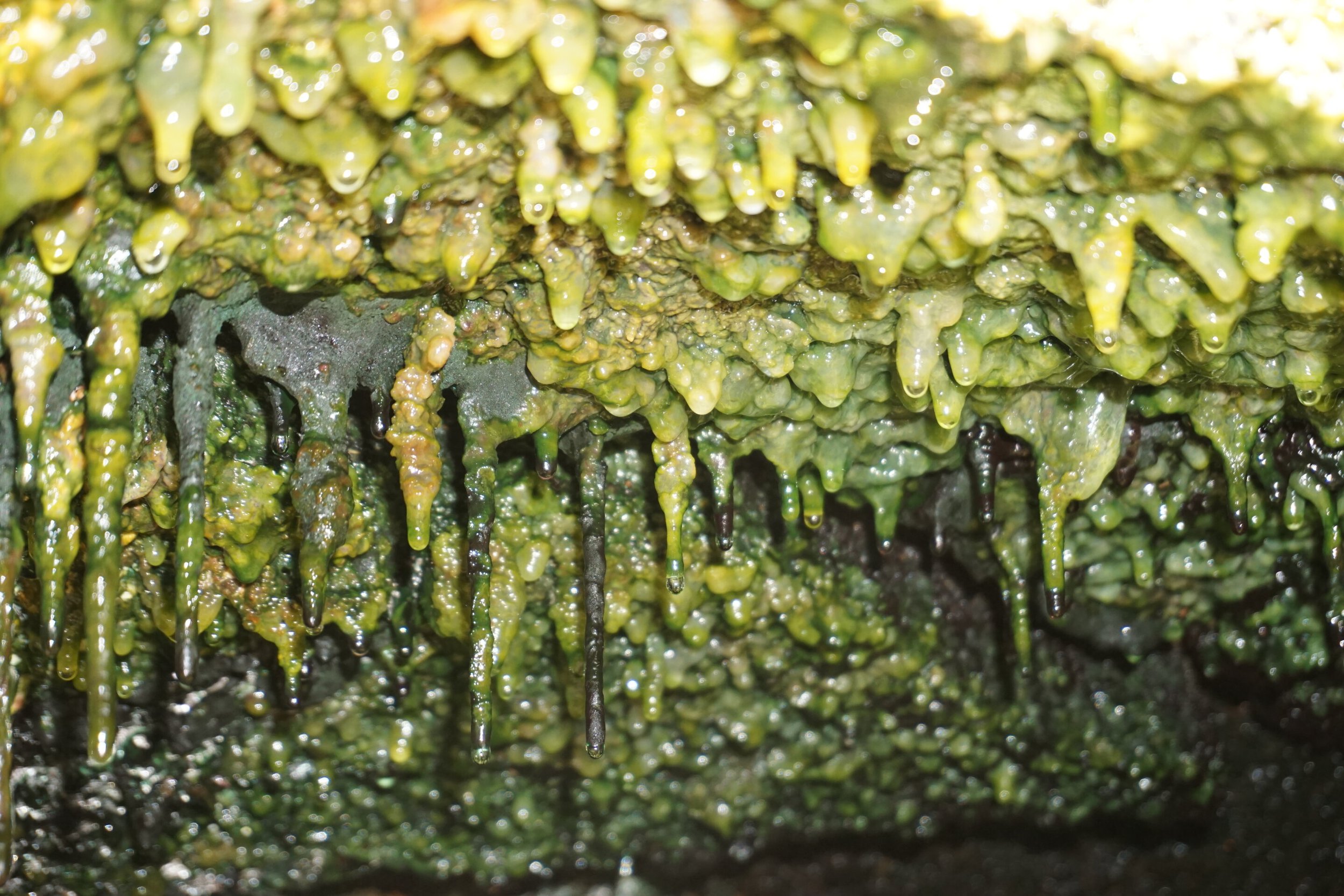Lava Caves of Hawaiʻi
Deep inside the slopes of Kīlauea, unique communities of extremophilic bacteria thrive within the inhospitable crevices of caves formed by once flowing lava. This unseen and often uncharacterized biodiversity may hold new compounds of antibiotic or pharmaceutical interest, or reveal ways in which early life on Earth found purchase in a primordial world.
Banner image credit: Kenneth Ingram
Biofilms inside a Hawaiʻi Island lava cave.
Photo credit: Jimmy Saw
Moanalua High School students prepare to sequence a genome using the ʻĀina-Informatics mobile lab.
Photo credit: ʻIolani School
Across Hawaiʻi Island, lava caves have also served as important cultural landscapes that throughout history have offered shelter, fresh water, refuge from conflict and sacred protection for ʻiwi kupuna. A dazzling array of microbes inhabit these caves, some able to survive off just the lava rock itself, converting the very pele into the ʻāina momona which sustains us all.
Wāhine preparing wauke and pounding kapa at a cave entrance.
These unique microbes have been painstakingly collected and cultured from these caves under the direction of microbiologists Dr. Stuart Donachie (University of Hawaiʻi at Mānoa) and Dr. Rebecca Prescott (NASA Postdoctoral Fellow) for decades.
Since 2018, students within the ʻĀina-Informatics Network have used cutting-edge MinION sequencing technology and bioinformatics tools to assemble and explore the genomes of these rare cultures.
Novel Species
For some of these bacteria, students discover that the species they have sequenced has not previously been described to Western science. In these cases, the ʻĀina-Informatics network has been generously offered the opportunity by our UH partners to propose scientific names for consideration by the International Committee on Systematics of Prokaryotes (ICSP).
Learn more about our Lava Cave Microbe Naming Campaign here.
Hawaiʻi Preparatory Academy students training on the Oxford Nanopore MinION sequencer.
Our Academic Partners
This project is a collaboration between ʻĀina-Informatics, the Donachie Lab in the School of Life Sciences at the University of Hawaiʻi at Mānoa, Los Alamos National Laboratory, the NASA Exobiology Program and NASA Johnson Space Center. Mahalo nunui to the many researchers past and present who have contributed to the discovery and cultivation of the bacteria sequenced in this effort.
Dr. Stuart Donachie
is a Professor of Microbiology at the University of Hawaiʻi at Mānoa. Dr. Donachie specializes in the collection, cultivation and characterization of microbial diversity and function from diverse environments throughout the Hawaiian Islands and beyond.
Dr. Rebecca Prescott
is currently a NASA Postdoctoral Fellow working with the NASA Johnson Space Center and her home institution, the University of Hawaiʻi at Mānoa. As a resident of the Hawaiian Islands for the past 15 years, Dr. Prescott’s research focuses on microbial interactions in environments from volcanic islands, and human cultural connections to those microbial communities.










